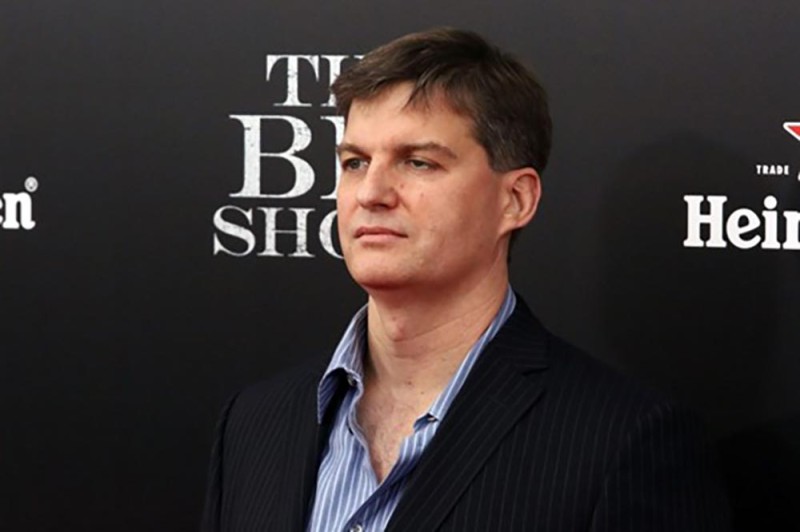
知名投资人迈克尔·伯里曾多次警告AI泡沫,如今他更是付诸实际行动来验证自己的判断。
伯里曾精准预判2008年房地产市场崩盘,并因以他为原型的电影《大空头》(The Big Short)而声名大噪。他近日披露正在做空科技巨头英伟达(Nvidia)和Palantir,原因是他担心AI公司估值超出其实际价值。
根据美国证券交易委员会(SEC)周一公布的截至9月30日的季度监管文件,伯里旗下对冲基金Scion资产管理公司(Scion Asset Management)买入了英伟达与Palantir这两家科技公司逾10亿美元的看跌期权。所谓看跌期权,是指当标的股价下跌时,买方能够获利的期权合约。另据Scion披露,该基金还买入了辉瑞(Pfizer)和哈里伯顿(Halliburton)的看涨期权。
伯里近期在社交媒体上多次以隐晦的方式暗示市场风险。他在X上写道:“有时,我们能看到泡沫;有时,我们可以利用泡沫有所作为;但有时唯一能赢的做法就是不参与。”
周一,他又发布了三张图表,其中包括彭博社上月刊登的一张图,该图显示当前AI热潮在很大程度上依赖于英伟达和OpenAI两家公司的合作关系。另一张图则对比了当下科技行业资本支出增长轨迹与互联网泡沫时期的相似之处。
Scion在今年第一季度就已披露对英伟达的看跌期权,并清空了其几乎全部股票持仓。虽然当时的申报文件称这些期权“可能用于对冲未披露的多头头寸”,但最新披露中并未出现类似说明。
Palantir首席执行官亚历克斯·卡普周二在接受CNBC节目《Squawk Box》采访时,对伯里的做空举动予以回击。
卡普表示:“他做空的这两家公司,正是当下盈利最多的公司,这太奇怪了。认为芯片和本体论是做空方向,简直荒谬至极。”
卡普补充道:“实际上,他是在做空整个AI行业……而被做空的目标正是我们和英伟达。”
膨胀的AI泡沫
并非只有伯里在对AI行业的现状发出警告。尽管该领域的投入屡创新高,但盈利能力依然有限。周二开盘后,纳斯达克指数立即下跌1.5%,标普500指数一度下挫约1%。科技股领跌,其中Palantir在周一公布财报后股价一度暴跌16%,尽管其营收超出市场预期。
德意志银行(Deutsche Bank)分析师吉姆·里德在一份投资者报告中写道:“他们的业绩表现不错,但公司在2026年的前景缺乏清晰预期,因此市场对其感到失望。”
英伟达走势同样疲软,截至周二早盘下跌逾2%。就在上周,这家半导体巨头刚刚成为全球首家市值突破5万亿美元的公司。甲骨文(Oracle)、微软(Microsoft)与苹果(Apple)等其他科技公司股价也纷纷走低。
英伟达和Palantir股价今年迄今分别上涨约46%和157%。
周二的股市急跌还受到投行高管言论的影响。高盛(Goldman Sachs)与摩根士丹利(Morgan Stanley)首席执行官均表示,预计股市将迎来一轮重大调整。高盛首席执行官苏德巍在当天于香港举行的“国际金融领袖投资峰会”(Global Financial Leaders’ Investment Summit)上表示,未来12至24个月内,股市可能出现10%至20%的下跌。摩根士丹利首席执行官泰德·皮克也持相同观点。
皮克表示:“只要下跌不是由宏观层面的断崖效应所致,我们同样应当接受股市回调10%至15%的可能性。”
Scion资产管理公司未回应《财富》杂志的置评请求。(*)
译者:刘进龙
审校:汪皓
知名投资人迈克尔·伯里曾多次警告AI泡沫,如今他更是付诸实际行动来验证自己的判断。
伯里曾精准预判2008年房地产市场崩盘,并因以他为原型的电影《大空头》(The Big Short)而声名大噪。他近日披露正在做空科技巨头英伟达(Nvidia)和Palantir,原因是他担心AI公司估值超出其实际价值。
根据美国证券交易委员会(SEC)周一公布的截至9月30日的季度监管文件,伯里旗下对冲基金Scion资产管理公司(Scion Asset Management)买入了英伟达与Palantir这两家科技公司逾10亿美元的看跌期权。所谓看跌期权,是指当标的股价下跌时,买方能够获利的期权合约。另据Scion披露,该基金还买入了辉瑞(Pfizer)和哈里伯顿(Halliburton)的看涨期权。
伯里近期在社交媒体上多次以隐晦的方式暗示市场风险。他在X上写道:“有时,我们能看到泡沫;有时,我们可以利用泡沫有所作为;但有时唯一能赢的做法就是不参与。”
周一,他又发布了三张图表,其中包括彭博社上月刊登的一张图,该图显示当前AI热潮在很大程度上依赖于英伟达和OpenAI两家公司的合作关系。另一张图则对比了当下科技行业资本支出增长轨迹与互联网泡沫时期的相似之处。
Scion在今年第一季度就已披露对英伟达的看跌期权,并清空了其几乎全部股票持仓。虽然当时的申报文件称这些期权“可能用于对冲未披露的多头头寸”,但最新披露中并未出现类似说明。
Palantir首席执行官亚历克斯·卡普周二在接受CNBC节目《Squawk Box》采访时,对伯里的做空举动予以回击。
卡普表示:“他做空的这两家公司,正是当下盈利最多的公司,这太奇怪了。认为芯片和本体论是做空方向,简直荒谬至极。”
卡普补充道:“实际上,他是在做空整个AI行业……而被做空的目标正是我们和英伟达。”
膨胀的AI泡沫
并非只有伯里在对AI行业的现状发出警告。尽管该领域的投入屡创新高,但盈利能力依然有限。周二开盘后,纳斯达克指数立即下跌1.5%,标普500指数一度下挫约1%。科技股领跌,其中Palantir在周一公布财报后股价一度暴跌16%,尽管其营收超出市场预期。
德意志银行(Deutsche Bank)分析师吉姆·里德在一份投资者报告中写道:“他们的业绩表现不错,但公司在2026年的前景缺乏清晰预期,因此市场对其感到失望。”
英伟达走势同样疲软,截至周二早盘下跌逾2%。就在上周,这家半导体巨头刚刚成为全球首家市值突破5万亿美元的公司。甲骨文(Oracle)、微软(Microsoft)与苹果(Apple)等其他科技公司股价也纷纷走低。
英伟达和Palantir股价今年迄今分别上涨约46%和157%。
周二的股市急跌还受到投行高管言论的影响。高盛(Goldman Sachs)与摩根士丹利(Morgan Stanley)首席执行官均表示,预计股市将迎来一轮重大调整。高盛首席执行官苏德巍在当天于香港举行的“国际金融领袖投资峰会”(Global Financial Leaders’ Investment Summit)上表示,未来12至24个月内,股市可能出现10%至20%的下跌。摩根士丹利首席执行官泰德·皮克也持相同观点。
皮克表示:“只要下跌不是由宏观层面的断崖效应所致,我们同样应当接受股市回调10%至15%的可能性。”
Scion资产管理公司未回应《财富》杂志的置评请求。(*)
译者:刘进龙
审校:汪皓
Storied investor Michael Burry has talked the AI-bubble talk, and now he’s walking the walk.
Burry, made famous in the 2015 film The Big Short for his prescience on the 2008 housing market collapse, disclosed some cynical bets against tech giants Nvidia and Palantir amid concerns of AI company valuations swelling beyond their true worth.
Scion Asset Management, Burry’s hedge fund, bought more than $1 billion in put options on the two tech companies, according to regulatory filings released on Monday for the quarter ended on Sept. 30. A put refers to an options contract that allows the buyer to profit when share prices decline. Scion also disclosed call options on Pfizer and Halliburton.
Burry has offered cryptic social media posts about market omens: “Sometimes, we see bubbles,” Burry said in a recent X post. “Sometimes, there is something to do about it. Sometimes, the only winning move is not to play.”
He followed up with a post on Monday showing three graphics, including one published by Bloomberg last month depicting how much of the AI boom is being propped up by partnerships with two companies, Nvidia and OpenAI. Another graph showed similar patterns in tech capital expenditure growth between today and the dotcom era.
Scion disclosed a put on Nvidia in the first quarter of this year and liquidated nearly its entire equity portfolio. While the fund’s earlier filing said the disclosed puts “may serve to hedge long positions which are not eligible to be reported,” the most recent filing did not contain the same statement.
Palantir CEO Alex Karp rebuked Burry’s move in an interview with CNBC’s Squawk Box on Tuesday.
“The two companies he’s shorting are the ones making all the money, which is super weird,” Karp said. “The idea that chips and ontology is what you want to short is bats–t crazy.
“He’s actually putting a short on AI … It was us and Nvidia,” he added.
A swelling AI bubble
Burry is not the only one heeding warnings about the AI industry, which has seen record spending but little profitability so far. The Nasdaq fell 1.5% immediately upon opening on Tuesday, while the S&P 500 initially dropped about 1%. Tech stocks are leading the nosedive, including Palantir, which saw its share price drop as much as 16% following its earnings report on Monday, despite beating revenue expectations.
“Their results were good, but markets were disappointed at the lack of company visibility for the whole of 2026,” Jim Reid of Deutsche Bank said in a note to investors.
Nvidia was similarly lagging, down more than 2% as of Tuesday morning. Last week, the semiconductor giant became the world’s first $5 trillion company. Oracle, Microsoft, and Apple, among other tech firms, are also trading down.
Nvidia and Palantir shares are up about 46% and 157% year to date, respectively.
The markets’ precipitous drops on Tuesday also followed comments from Goldman Sachs and Morgan Stanley CEOs saying they expect a major stock market correction. Goldman Sachs CEO David Solomon said at the Global Financial Leaders’ Investment Summit in Hong Kong on Tuesday there would likely be a 10% to 20% drawdown in equity markets in the next 12 to 24 months. Morgan Stanley CEO Ted Pick agreed.
“We should also welcome the possibility that there would be drawdowns, 10% to 15% drawdowns that are not driven by some sort of macro cliff effect,” he said.
Scion Asset Management did not respond to Fortune’s request for comment.

